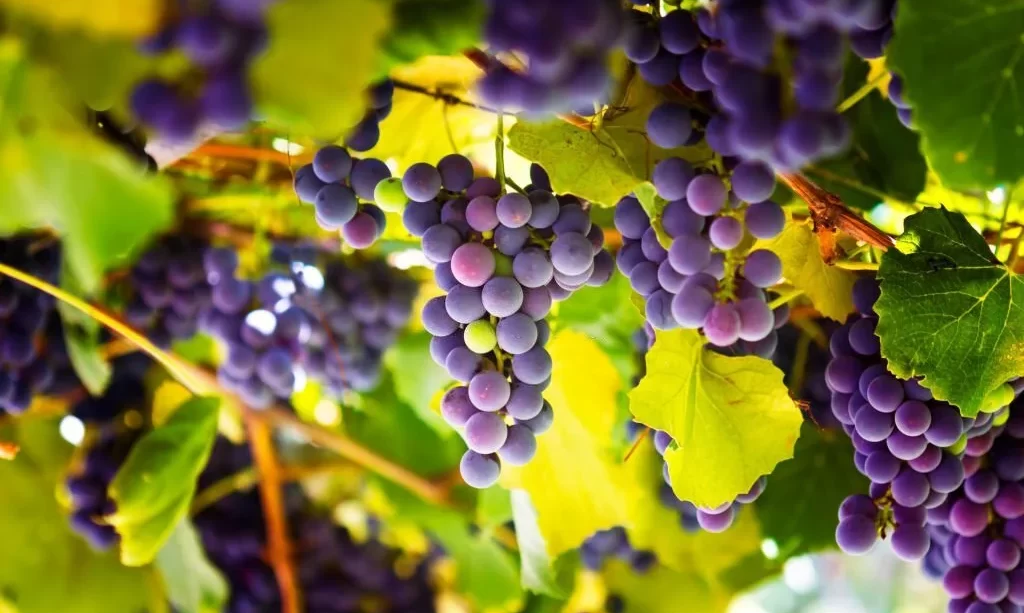Grapes, with their juicy clusters of fruit, have been cultivated for millennia to make wine, raisins, and other delicious treats. Yet, there exists a persistent misconception among some that grapes grow on trees. In this exploration, we venture into the world of viticulture to unravel the truth behind the growth of grapevines and address the age-old question: Do grapes really grow on trees?
Grapevines
To shed light on the misconception, it’s crucial to grasp the essence of grapevines as unique woody plants:
- Vitis Genus: Grapevines belong to the genus Vitis, encompassing various species and cultivars used for both table grapes and winemaking. This botanical classification sets them apart from tree species.
- Climbing Habit: Grapevines exhibit a distinctive climbing habit, characterized by long, flexible canes that twine around structures or supports. This allows them to reach upward for sunlight and air circulation.
- Fruit Production: One of the hallmark features of grapevines is their capacity to produce clusters of grapes, which vary in size, color, and flavor depending on the grape variety. These grapes are the coveted harvest used for winemaking or enjoyed as fresh fruit.
Tree vs. Vine: Botanical Distinctions
To clarify the misconception about grapes growing on trees, it’s essential to delve into the botanical distinctions between trees and grapevines:
- Growth Habits: Trees, characterized by a single woody stem or trunk, typically have branches that extend outward. In contrast, grapevines have flexible canes that climb and twine around supports or structures.
- Leaf Structure: Trees possess a wide variety of leaf shapes and sizes, often with a central vein or midrib. Grapevines have distinct palmate leaves with multiple lobes radiating from a central point.
- Overall Morphology: Trees have a distinct growth pattern with a central trunk and branching canopy. Grapevines, on the other hand, showcase a vining structure that allows them to climb and adapt to various trellising systems.
Understanding these botanical distinctions is pivotal in dispelling the myth that grapes grow on trees. As we delve deeper into the world of viticulture, we will uncover the fascinating life cycle of grapevines and the supporting structures that aid them in their upward journey towards the sun.
Grapevine Life Cycle
To understand grapevines fully, it’s essential to explore their annual life cycle:
- Dormancy: Grapevines experience dormancy during the winter months, where they shed their leaves and conserve energy in preparation for the upcoming growing season.
- Budbreak: Spring heralds the budbreak, a crucial phase where new shoots emerge from dormant buds. These shoots will bear leaves and, eventually, clusters of grapes.
- Flowering and Fruit Set: As spring progresses, grapevines produce delicate flowers that are pollinated by wind or insects. Successful pollination leads to fruit set, the formation of small grape clusters.
- Ripening: Throughout the summer, these grape clusters develop and ripen under the sun’s warmth. The fruit undergoes various chemical changes, resulting in the sugars, acids, and flavors characteristic of each grape variety.
- Leaf Fall: With the arrival of autumn, grapevines go through leaf fall, where they shed their leaves in preparation for winter dormancy, completing their annual life cycle.
Trellising and Support Systems
The role of trellising and support systems in grape cultivation is vital:
- Structural Assistance: Due to their climbing habit, grapevines require support to grow effectively. Trellising systems, which can vary in complexity, provide the necessary structure for grapevines to climb and flourish.
- Sunlight Exposure: Proper trellising not only supports the vines but also optimizes sunlight exposure for grape clusters. This ensures even ripening and enhances grape quality.
- Pruning and Training: Trellising systems facilitate essential tasks like pruning and training, where excess growth is trimmed to promote balanced fruit production and airflow, reducing disease risk.
Common Misconceptions
Dispelling the myth that grapes grow on trees requires addressing common misconceptions:
- Historical Origins: Historical depictions of grapevines in art and literature may have contributed to the idea of grapes growing on trees, as they were often illustrated in trellised or vineyard settings.
- Cultural Significance: In some cultures, grapevines may have been intertwined with trees for various reasons, reinforcing the misconception.
- Grape Clusters on Vines: Observing grape clusters hanging from vines high above the ground might lead to the misperception that they are tree-borne.
Conclusion
In conclusion, grapes do not grow on trees but on grapevines, which are distinct plants with a climbing habit. Understanding the unique characteristics and life cycle of grapevines, as well as their reliance on trellising and support systems, helps clarify this botanical truth.
The misconception that grapes grow on trees may persist due to historical and cultural influences. However, a closer look at the world of viticulture reveals the fascinating journey of grapevines, from dormancy to ripening, and the critical role of support structures in their growth.
By dispelling this myth, we gain a deeper appreciation for the cultivation of these luscious fruits, whether for wine production, table grapes, or other culinary delights. So, while grapes may not grow on trees, their story is equally rich and rewarding, intertwined with the art and science of grape growing.






